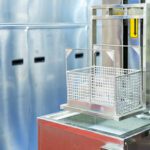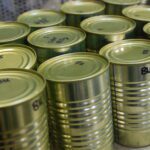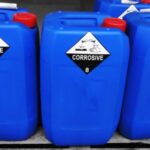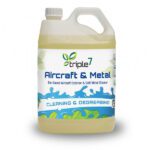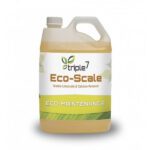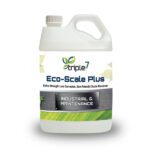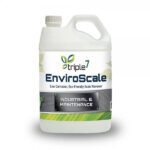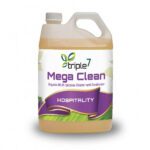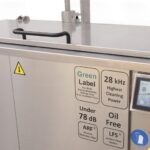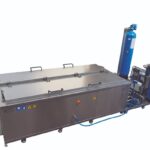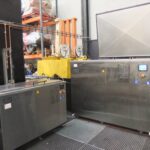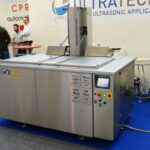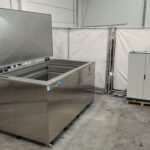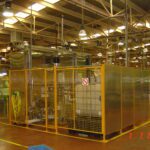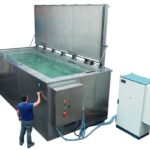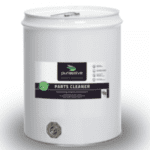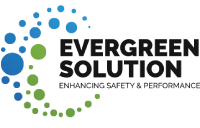Table of Contents
Introduction
Maintaining the efficiency and longevity of heat exchangers in large plants requires regular and thorough cleaning. CIP (Cleaning in Place) is a crucial process that ensures heat exchangers operate at optimal levels without disassembling the equipment. However, CIP cleaning can be resource-intensive and costly, posing a significant challenge for large plants. Effective cost control and reduction strategies are essential to manage these expenses and enhance overall efficiency. This blog will detail the process to be followed to achieve cost control and reduction during CIP cleaning of heat exchangers.
Understanding CIP Cleaning for Heat Exchangers
CIP cleaning is an automated process that cleans the interior surfaces of heat exchangers without disassembly. This method is essential for maintaining hygiene, efficiency, and operational continuity in industries such as food and beverage, pharmaceuticals, and chemicals. The CIP process typically involves several steps: pre-rinse, cleaning (with detergents or chemicals), intermediate rinse, sanitization, and final rinse.
Challenges in CIP Cleaning Cost Management
While CIP cleaning is efficient, it presents several cost-management challenges:
High Operational Costs: The use of water, energy, and cleaning agents can result in significant expenses.
Resource-Intensive Processes: The need for substantial amounts of water and chemicals increases operational costs.
Downtime and Production Loss: Cleaning operations require downtime, leading to potential production losses.
Strategies for Cost Control and Reduction
Process Optimization
Streamlining the Cleaning Cycle: Analyzing and optimizing the duration of each cleaning step can reduce water and chemical use. Shortening unnecessary long rinse cycles without compromising cleanliness can save significant costs.
Using the Right Concentration of Cleaning Agents: Proper dosing of cleaning agents is crucial. Overdosing can lead to wastage and increased costs while under-dosing can result in ineffective cleaning, necessitating repeat cycles. Historical data on dosage efficiencies vis-à-vis regulated timings should be used.
Implementing Automated Monitoring Systems: Automated systems can monitor and adjust cleaning parameters in real time, ensuring optimal use of resources and consistent cleaning performance.
Resource Management
Efficient Use of Water and Chemicals: Implementing water-saving technologies and practices can reduce water consumption. Using high-efficiency nozzles and optimizing spray patterns can achieve better cleaning with less water.
Recycling and Reusing Cleaning Solutions: Developing a recycling program for cleaning solutions can reduce the amount of fresh chemicals needed. Filtration and separation technologies can reclaim and purify used cleaning solutions for reuse.
Energy-Efficient Practices: Employing energy-efficient pumps, heaters, and other equipment can reduce energy consumption during the CIP process. Scheduling cleaning cycles during off-peak energy hours can also lower energy costs.
Technological Advancements
Adopting Advanced Cleaning Technologies: Innovations such as ultrasonic cleaning and high-pressure water jets can enhance cleaning efficiency and reduce resource consumption.
Real-Time Monitoring and Control Systems: Integrating sensors and control systems can provide real-time data on cleaning performance, allowing for immediate adjustments and optimization.
Integration with Plant Management Software: Using comprehensive plant management software can streamline CIP processes, monitor resource usage, and generate reports for continuous improvement.
Training and Workforce Management
Comprehensive Training Programs for Staff: Ensuring that staff are well-trained in CIP procedures and best practices can improve efficiency and reduce errors. Regular training updates can keep staff informed about the latest techniques and technologies.
Regular Maintenance and Inspection: Proactive maintenance and regular inspection of equipment can prevent breakdowns and reduce the need for costly repairs.
Empowering Staff with Decision-Making Capabilities: Encouraging staff to identify inefficiencies and suggest improvements can foster a culture of continuous improvement and cost savings.
Vendor and Supply Chain Management
Partnering with Reliable Suppliers: Working with reliable suppliers who offer quality products at competitive prices can reduce costs. Establishing long-term relationships can lead to better pricing and terms.
Negotiating Better Terms and Prices: Regularly reviewing and negotiating contracts with suppliers can ensure the best possible terms and prices for cleaning agents and other materials.
Ensuring Timely and Cost-Effective Supply of Materials: Efficient supply chain management can prevent delays and ensure that materials are available when needed, reducing downtime and associated costs.
Case Study: Successful Cost Reduction in CIP Cleaning
Introduction to the Case Study
A large beverage manufacturing plant faced high operational costs due to its CIP cleaning processes. The plant sought to implement cost control and reduction strategies to enhance efficiency and reduce expenses.
Problem Situation and Challenges Faced
The plant’s CIP cleaning process was resource-intensive, with high water, energy, and chemical consumption. Additionally, prolonged downtime during cleaning cycles resulted in production losses.
Implementation of Cost Control Strategies
The plant adopted several strategies to address these challenges:
Process Optimization: The cleaning cycle was analyzed and optimized, reducing water and chemical use without compromising cleanliness.
Resource Management: Water-saving technologies were implemented, and a recycling program for cleaning solutions was developed.
Technological Advancements: Advanced cleaning technologies and real-time monitoring systems were adopted to enhance efficiency.
Training and Workforce Management: Comprehensive training programs were provided to staff, and regular maintenance schedules were established.
Vendor and Supply Chain Management: Long-term partnerships with reliable suppliers were established, and contracts were regularly reviewed and negotiated.
Results and Benefits Achieved
The implementation of these strategies led to significant cost savings. The plant reduced its water and chemical consumption, lowered energy costs, and minimized downtime. These improvements resulted in enhanced operational efficiency and reduced overall costs.
Conclusion and Key Takeaways
The case study demonstrates the effectiveness of the cost control and reduction strategies discussed. By adopting a comprehensive approach to process optimization, resource management, technological advancements, workforce management, and supply chain management, the plant achieved substantial cost savings and improved efficiency.
Conclusion
Effective cost control and reduction in CIP cleaning processes are essential for maintaining efficiency and profitability in large plants. By adopting strategies such as process optimization, resource management, technological advancements, training, and vendor management, organizations can achieve significant cost savings and enhance operational efficiency.
For more information on cost-effective CIP cleaning solutions, contact ESP today. Explore our range of innovative cleaning technologies and support services, and subscribe to our newsletter for industry insights and updates.


